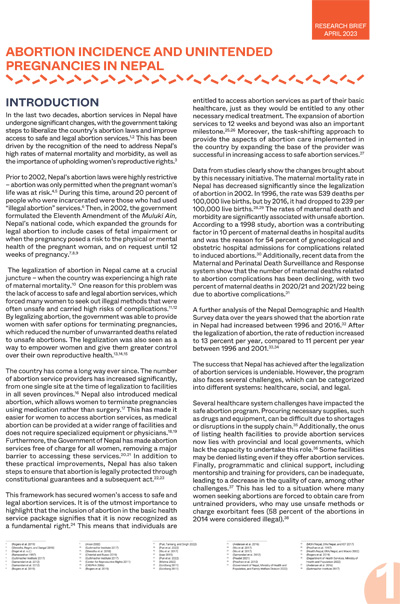 INTRODUCTION
INTRODUCTION
In the last two decades, abortion services in Nepal have undergone significant changes, with the government taking steps to liberalize the country’s abortion laws and improve access to safe and legal abortion services.1,2 This has been driven by the recognition of the need to address Nepal’s high rates of maternal mortality and morbidity, as well as the importance of upholding women’s reproductive rights.
Prior to 2002, Nepal’s abortion laws were highly restrictive – abortion was only permitted when the pregnant woman’s life was at risk.4,5 During this time, around 20 percent of people who were incarcerated were those who had used “illegal abortion” services.6 Then, in 2002, the government formulated the Eleventh Amendment of the Muluki Ain, Nepal’s national code, which expanded the grounds for legal abortion to include cases of fetal impairment or when the pregnancy posed a risk to the physical or mental health of the pregnant woman, and on request until 12 weeks of pregnancy.
The legalization of abortion in Nepal came at a crucial juncture – when the country was experiencing a high rate of maternal mortality.10 One reason for this problem was the lack of access to safe and legal abortion services, which forced many women to seek out illegal methods that were often unsafe and carried high risks of complications.11,12 By legalizing abortion, the government was able to provide women with safer options for terminating pregnancies, which reduced the number of unwarranted deaths related to unsafe abortions. The legalization was also seen as a way to empower women and give them greater control over their own reproductive health.

